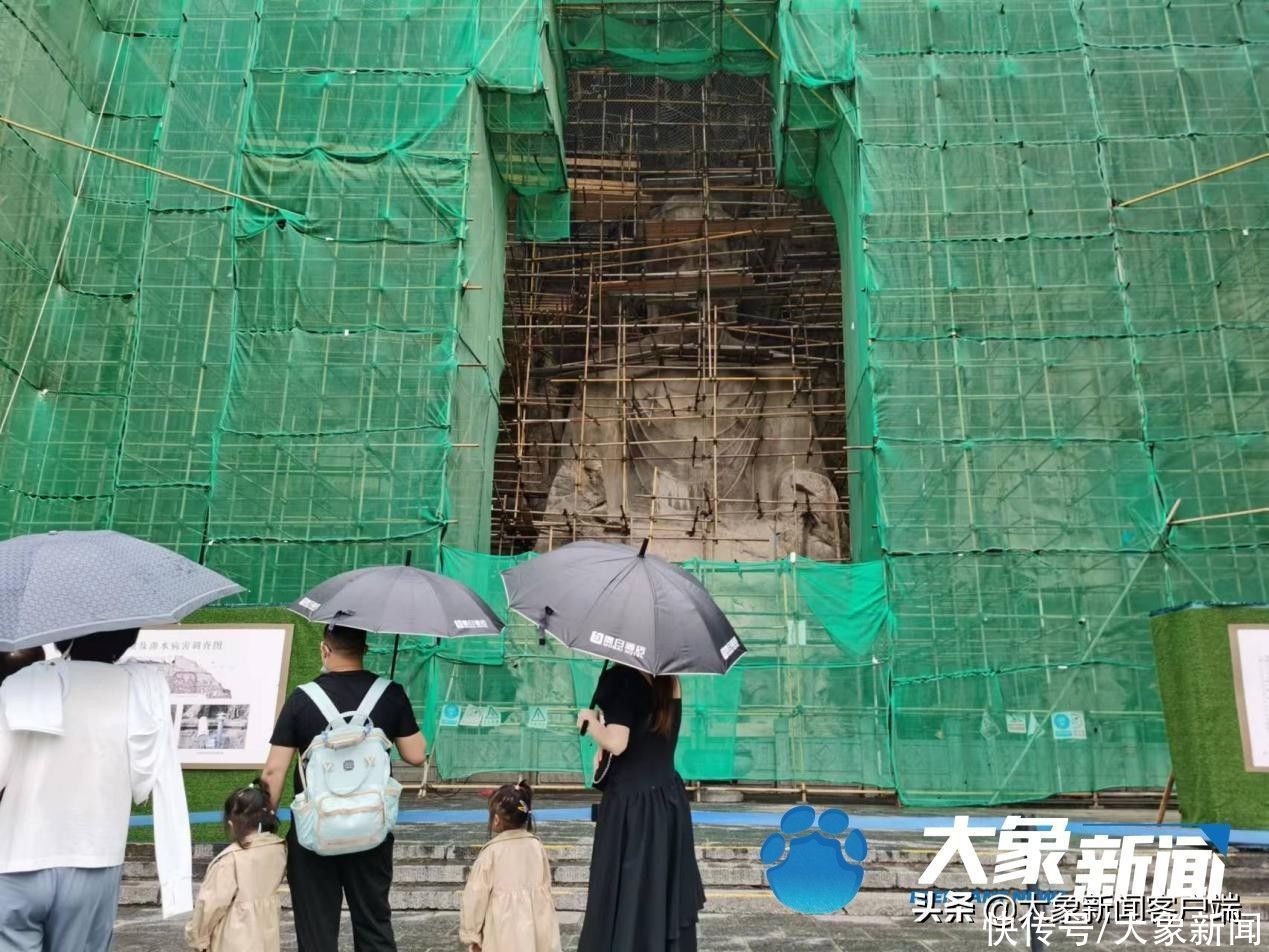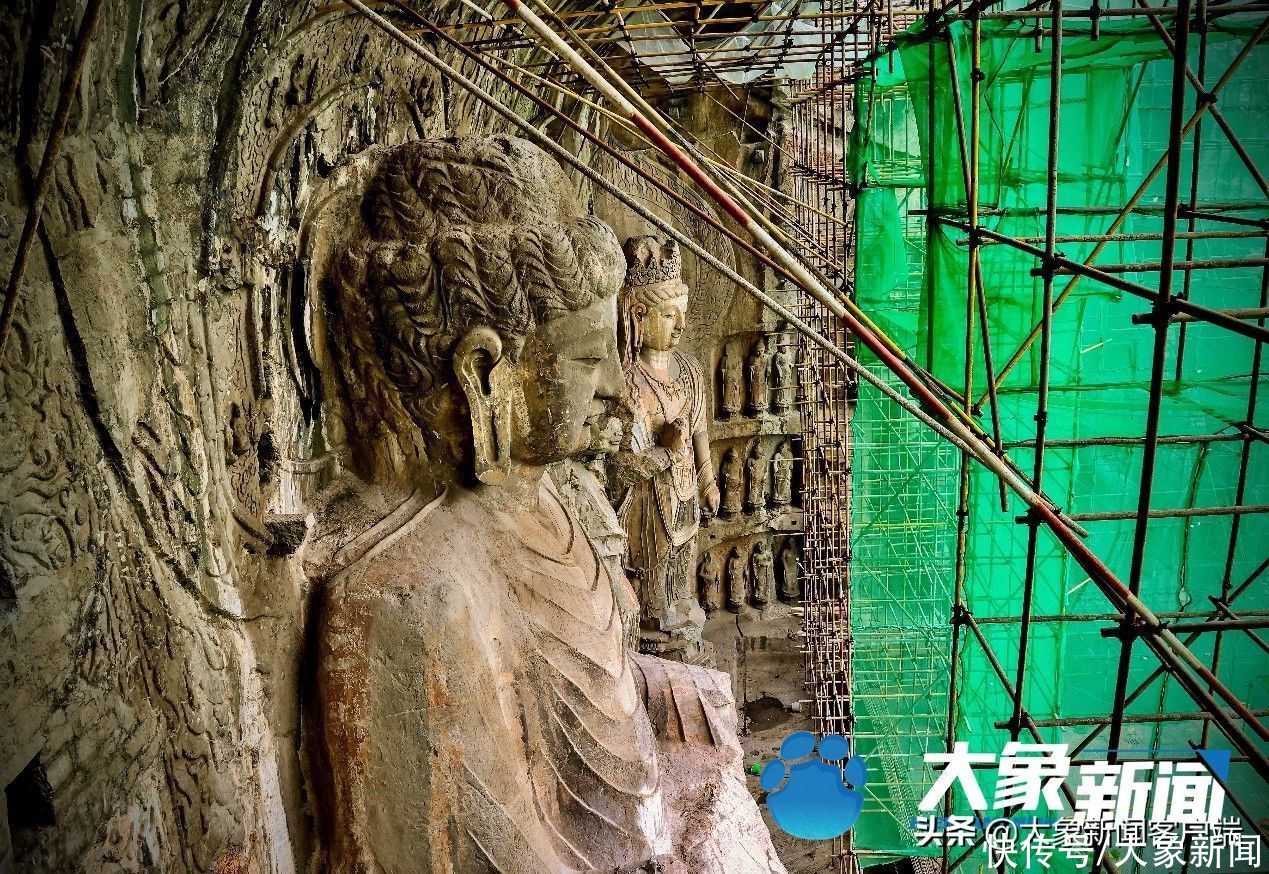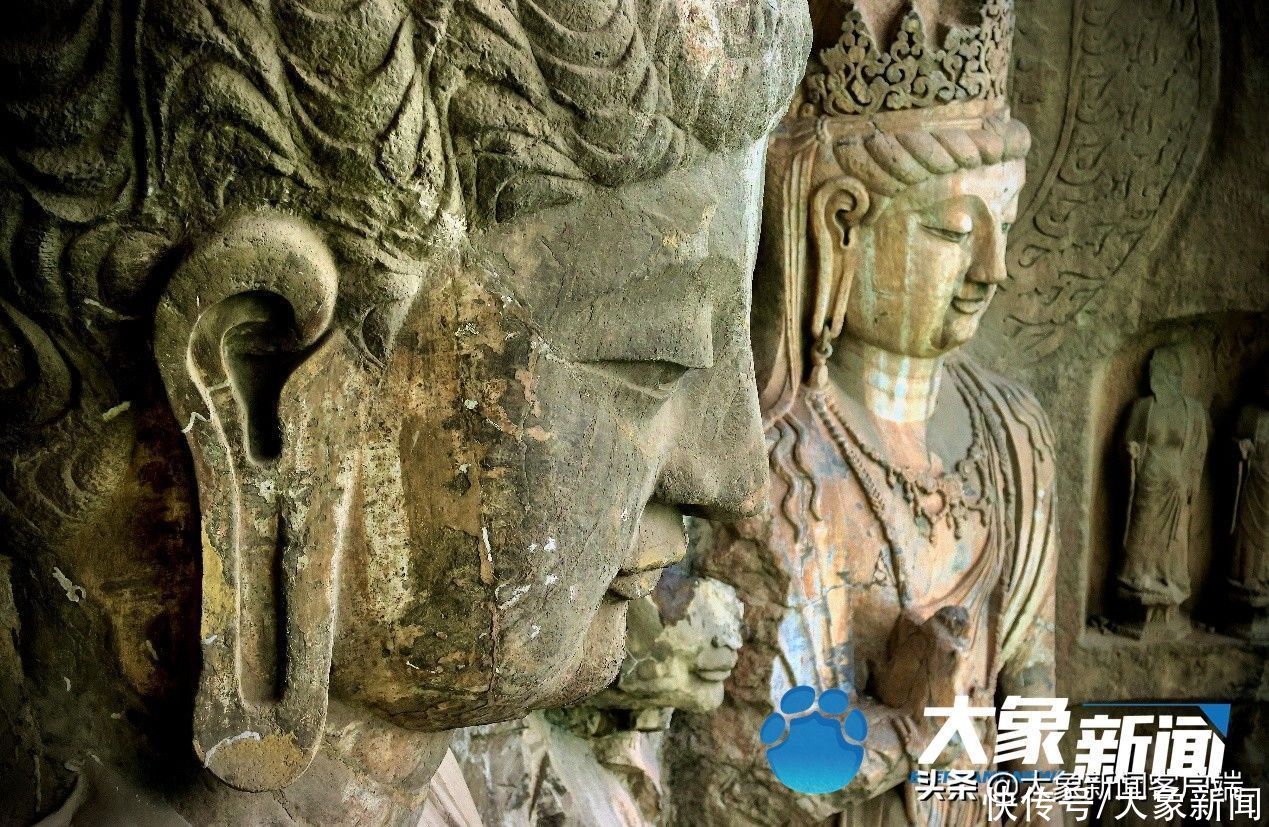Elephant News reporter Qiu Yanbo/Wen Duan Jinzhe/Photo
There is no Yingti, it is not the Southern Dynasty. On July 20, the Yi River crossed the Longmen Mountain to the north. Thousands of niches and more than 110,000 large and small Buddha statues on both sides of the strait were bathed in mist and rain. The Longmen Grottoes were first carved in the Northern Wei Dynasty, flourished in the Tang Dynasty, and finally at the end of the Qing Dynasty. After more than 10 dynasties, including Northern Wei, Eastern Wei, Western Wei, Northern Qi, Sui, Tang, Five Dynasties, Song, Ming, and Qing Dynasties, and more than 1,400 years, it is the longest grotto in the world.
In another day, on July 21, the jewel in the crown of Longmen Grottoes, the Lucena Buddha, will show its true face with a new look.

The 1,300-year-old Buddha is covered in green drapery
In 675 AD, on the day when the Lucena Buddha was completed, Wu Zetian personally led the civil and military officials to attend the consecration ceremony. When she looked at the big Buddha carved with her as the prototype, the big Buddha also looked at her from a height and looked at all beings. From then on, a thousand years.
For more than 1,300 years, the Buddha has overlooked all living beings under his feet. The Buddha is 17.14 meters high, with a head height of 4 meters and ears of 1.9 meters long. Its face is plump and round, its eyebrows are curved like a crescent moon, and a pair of beautiful eyes stares down slightly.

According to “The Records of the Buddhist Shrines of Da Lushena”: “It is my emperor, Tuzli quality.” This is the basis for the construction of the Lucena Buddha based on Wu Zetian. In 672 AD, when the Great Buddha was excavated, Wu Zetian sponsored Zhifen with 20,000 yuan.
Rushana Buddha, which means the light is everywhere. Just like the word Wu Zetian made for his name: Zhao, which means that the sun and the moon are in the sky, and the whole sky shines together.
Fengxian Temple, with the Lushena Buddha as its main Buddha, is located in the southern section of Longmen West Mountain in Luoyang. The “business card” represents the highest achievement of Chinese Tang Dynasty sculpture art.
The Great Buddha, which overlooks all living beings for more than 1,300 years, will be covered with a green curtain in December 2021.
Another restoration after half a century
December 7, 2021 The official website of the State Administration of Cultural Heritage released the “Special Plan for the Protection and Utilization of Grotto Temples during the 14th Five-Year Plan”, and the Longmen Grottoes were mentioned five times in the plan. At the same time as the release of the Special Plan for the Protection and Utilization of Grotto Temples during the 14th Five-Year Plan period, the large-scale seepage treatment and reinforcement and protection of dangerous rock masses in Fengxian Temple of Longmen Grottoes were officially launched.

This is not the first time to see a doctor in Longmen Grottoes, nor is it the Lusena Buddha The first “treatment”.
Tang Dynasty craftsmen had already dug a “herringbone”-shaped drainage ditch above Fengxian Temple in Longmen Grottoes to prevent leakage of water from eroding the Buddha.
In the Song Dynasty, there were eight divisions responsible for the protection and repair of cultural relics and buildings. There are many inscriptions in the Song Dynasty in the Longmen Grottoes. In the position of the Buddha’s seat, there is an engraved “Record of Ten People Cultivating the Buddha”, which clearly records the names and time of the ten people who repaired the Buddha at that time.
The protection and repair work of Longmen Grottoes, whether official or private, has never stopped.
After the founding of New China, the state’s protection of the Longmen Grottoes was further strengthened.
From 1971 to 1974, the State Administration of Cultural Heritage implemented the rescue and reinforcement project of Fengxian Temple in Longmen Grottoes.
After this stage of reinforcement, the collapse of the surrounding rocks and statues of the grotto was effectively prevented, and the stability of the Fengxian Temple sculptures was guaranteed.
The protection and restoration project started in 2021 is the first time in half a century since the protection and restoration work of Fengxian Temple was carried out in the 1970s. Large conservation project. After investigation, Fengxian Temple has dangerous rock mass and water seepage and other diseases. This protection project repairs the dangerous rock mass on the top and both sides of the Buddha, but does not involve the body of the Buddha. The construction site used 40,000 meters of steel pipes and 8,000 square meters of protective nets, covering the entire Lushena Buddha with a green gauze.
Lusena Buddha is famous for its mysterious smile and is praised by foreign tourists as the “Oriental Mona Lisa” and “the most beautiful statue in the world”. After more than 7 months of restoration, the Lushena Buddha, who has been gazing for a thousand years, will lift off the green curtain and reappear in front of all beings. What’s the hardest part about this fix? What new technology was used? What new discoveries have never been seen before? On July 21, Elephant News will broadcast the completion ceremony live for you, taking you to appreciate the model of Chinese stone carving art and feel the artistic atmosphere of the Tang Dynasty.